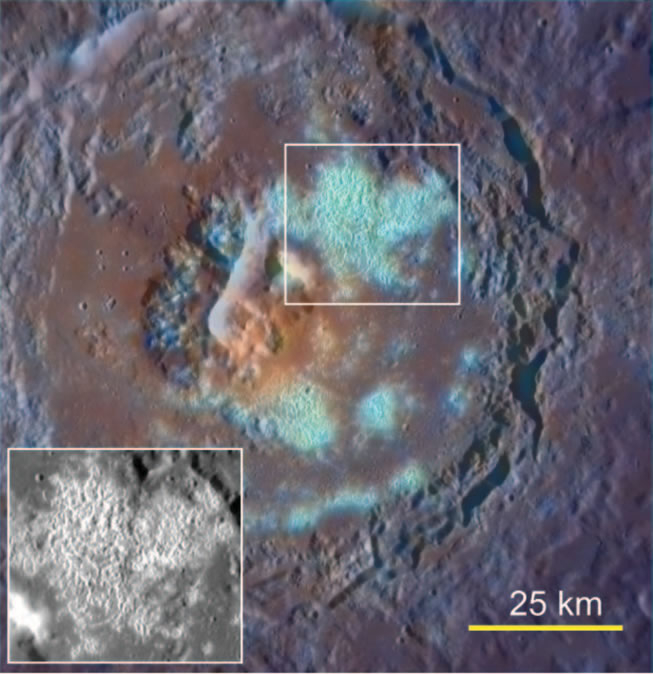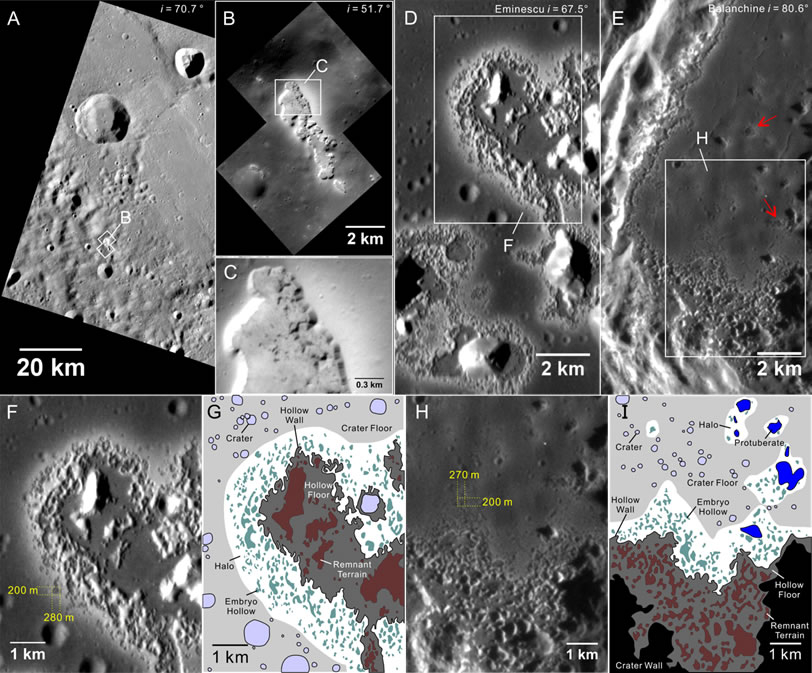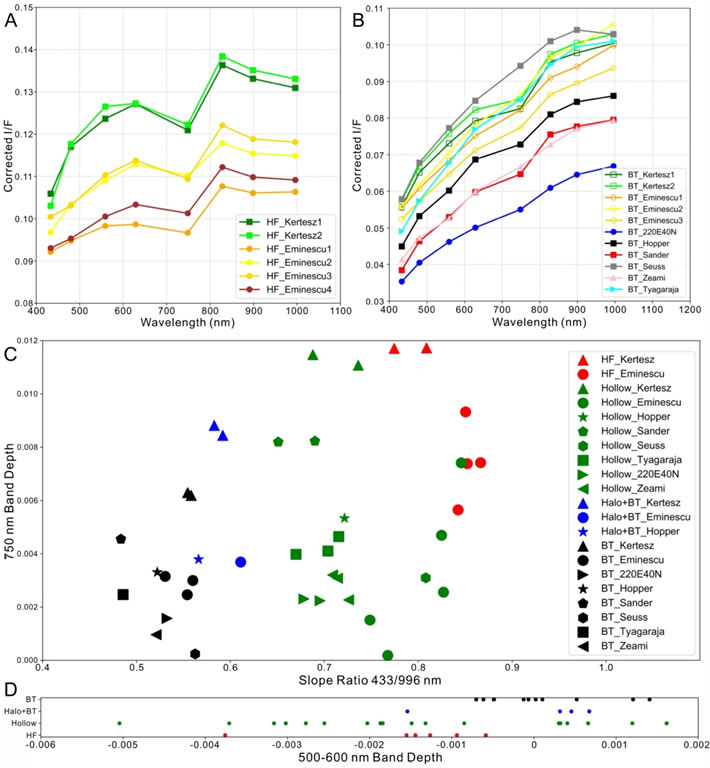Lost Volatiles During the Formation of Hollows on Mercury
Hollows are the key to understand the composition and evolution of volatiles in the planet Mercury (Figure 1). A fundamental question about the formation mechanism of hollows is the true reflectance spectra of the possible volatile compounds. The research group led by Dr. Zhiyong Xiao use the high‐resolution images and reflectance spectra returned by the MESSENGER spacecraft to investigate the nature and origin of hollows on Mercury. Hollows are divided as different geomorphological facies (Figure 2) according to their morphology and possible degree of devolatilization, and reflectance spectra for different facies of hollows are extracted. Large sample analyses reveal that the spectra of hollow floors and background terrains are the two end‐members, whose mixtures can account for the observed wide ranges of reflectance spectra of hollows (Figure 3). Spectral analyses favor that carbon might be a volatile compound that formed hollows, although direct spectral observations for the hollow‐forming volatiles are prohibited because volatiles are mainly lost from steep hollow walls. The initiation and growth of hollows are controlled by structural heterogeneities in the subsurface, such as widespread cooling fractures that were developed in melt sheets of complex craters. A maximum model age of 103 (+200, −96) thousand years is derived for the global population of hollows, yielding an average growth rate >1,000 times that of previous estimations. Based on the geometry of the different morphological facies of all visible hollows on Mercury, the conservation of mass predicts a minimum volume of lost volatiles of 1,266 km3. They predict that an active rejuvenation of volatiles has occurred in the shallow crust of Mercury.
This article has been published on Journal of Geophysical Research: Planets. The first author is the Ph.D. candidate Yichen Wang. The corresponding author is Dr. Zhiyong Xiao from PEARL.



Citation:
Wang, Y., Xiao, Z., Chang, Y., & Cui, J. (2020). Lost volatiles during the formation of hollows on Mercury. Journal of Geophysical Research: Planets, 125, e2020JE006559. https://doi.org/10.1029/2020JE006559.

